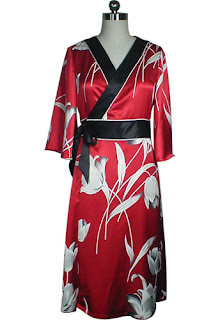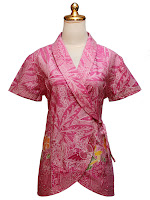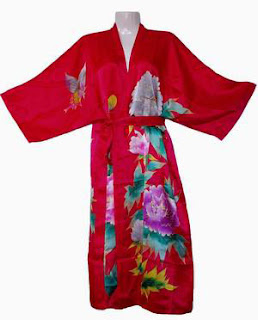Kimonos are not under the influence of traditional Korean clothing. However, the kimono took inspiration from traditional Chinese clothes, "Hanfu" (Hanfu = han (han tribe) fu (clothing) -> tribes clothes Hanfu = han). Modern kimono as we see today has come to be seen since the Heian period (circa 800).
Kimonos are usually made from Japanese silk-print on the technique "Yuzen". "Yuzen" means printing techniques over and over - so, the actual pattern of the kimono was repeated (a kind of monogram). Many people who thought that it was painted and a kimono kimono that contains one painting, but actually wrong.
According to some sources, Kimono in the ancient times the section should be removed for washing and sewn and jointed back time would be used, but the times have eliminated this requirement.
Explanation of Kimono :
- Kimono consists of various types, from the formal to the casual.
- Levels of formality and status of the kimono wearer indistinguishable from the color, shape, and pattern kimono motifs. Unmarried women usually wear long-sleeved kimono beautifully (even down to floor length), patterned bustling, and brightly colored. While married women usually wear short-sleeved kimono, patterned quiet, and somewhat darker colored. For men, usually dull-colored kimono worn (dark blue, dark brown. Etc.).
- The formality of a kimono is also determined by lot / accessories at least, many / the least amount of "Kamon" (family crest), and the material of her robe. Kimono of silk is the most expensive and most formal and more casual cotton kimono. Now, even many kimono from polyester material.
- The original Japanese Kimonos are usually very expensive, the average price is U $ 30,000 a piece for a kimono top class. A complete kimono (kimono, nagajuban, obi, tabi, geta) could be worth about 200 million. But, ordinary kimono is much cheaper, about 20-50 million a piece.









{ 0 comments... read them below or add one }
Post a Comment